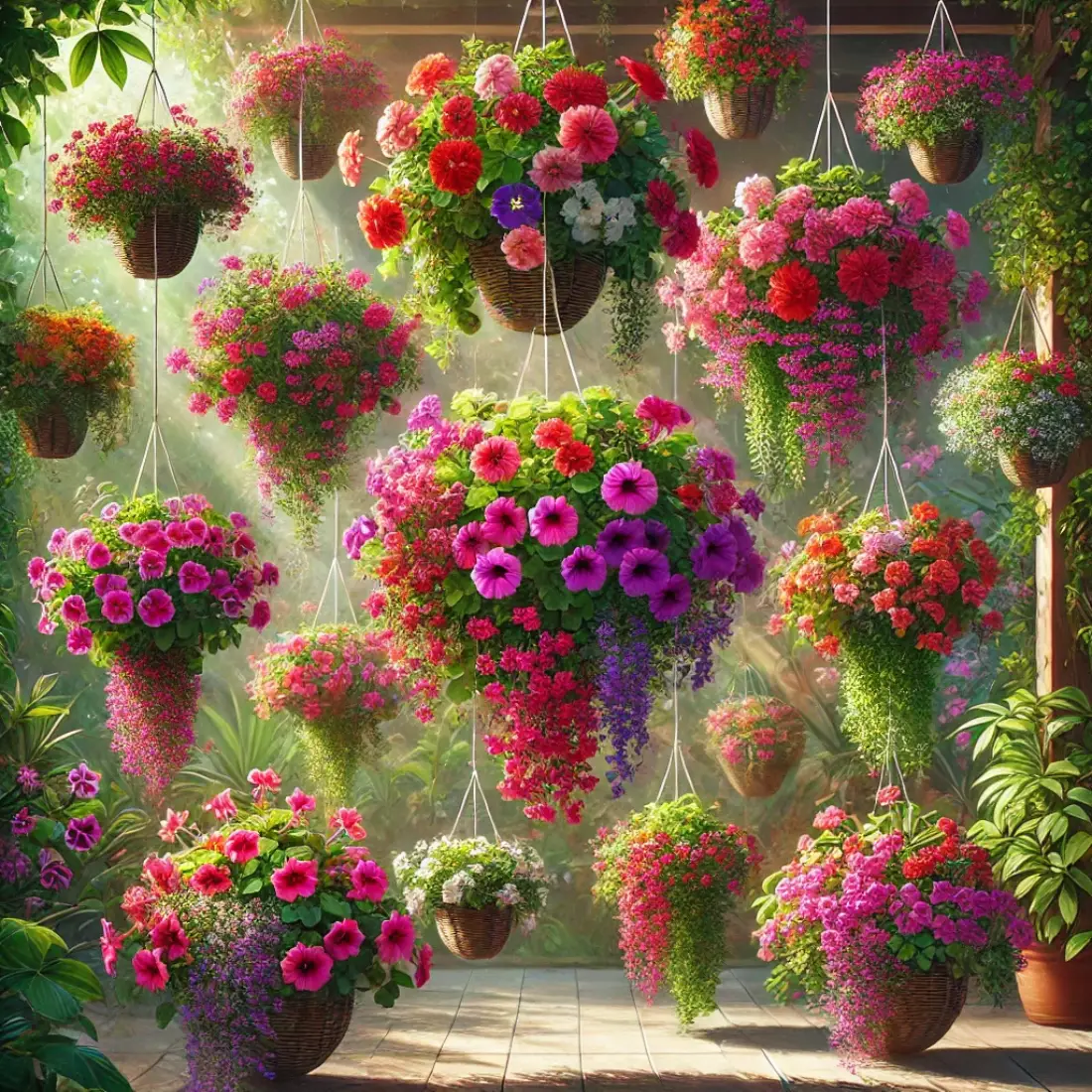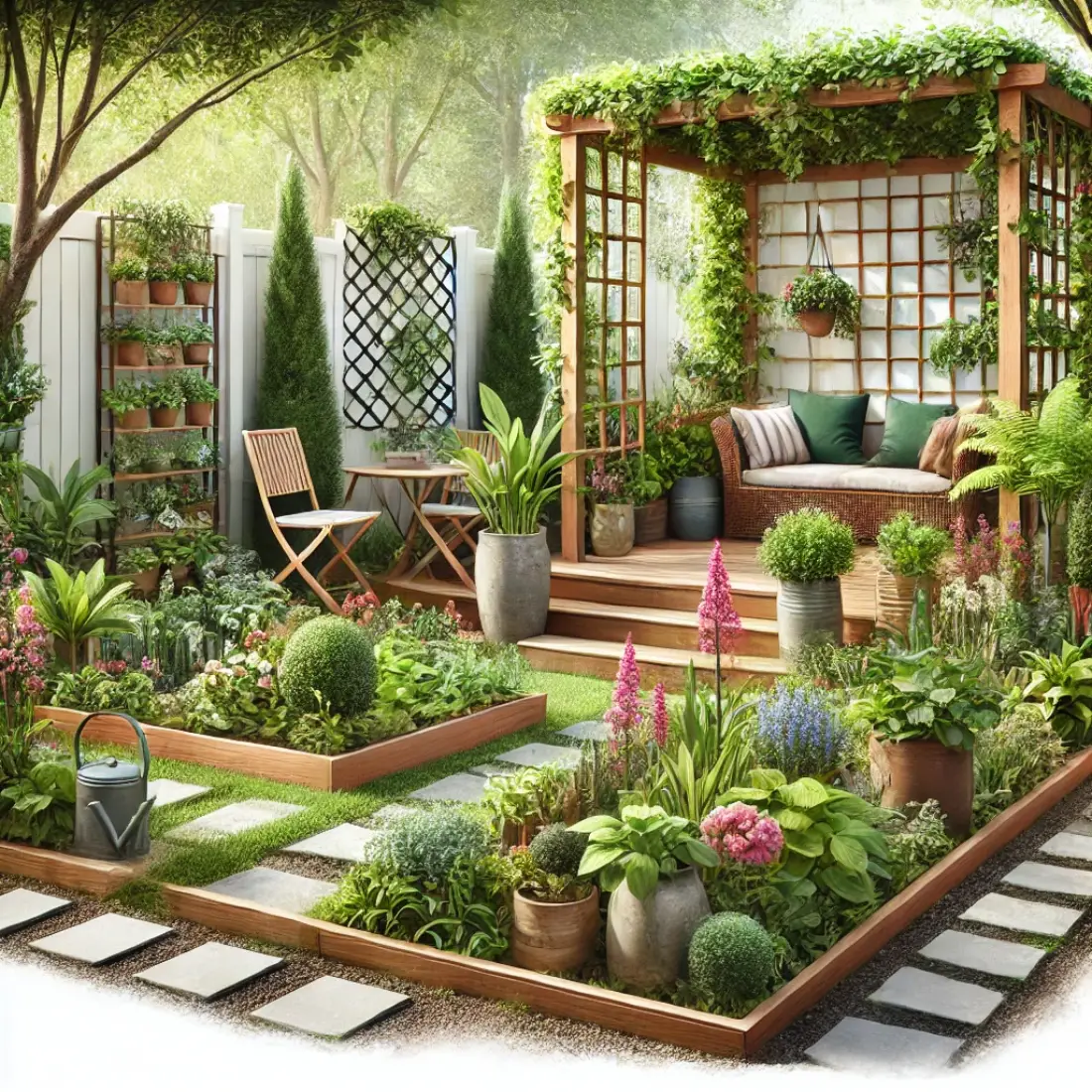Hanging baskets are a fantastic way to add vertical interest and vibrant color to any space, whether indoors or outdoors. They offer a unique gardening solution for those with limited ground space and provide an opportunity to create stunning floral displays at eye level.
Choosing the best plants for hanging baskets can transform your garden, patio, or even your living room into a lush, green oasis. From sun-loving flowers to shade-tolerant foliage, the options are endless.
- Hanging baskets add vertical interest and vibrant color to any space.
- Choose plants based on light requirements, growth habits, and aesthetic appeal.
- Mix and match different types of plants for a stunning visual effect.
Choosing the Right Plants for Hanging Baskets
Selecting the right plants for hanging baskets is crucial for creating a vibrant and healthy display. Consider the light requirements of your space: sun-loving plants like petunias and verbena thrive in full sunlight, while shade-tolerant plants like fuchsias and begonias prefer cooler, dimmer areas.
Watering needs are also essential; some plants require frequent watering, while others, such as succulents, prefer dry conditions. Growth habits play a role too—opt for trailing or cascading plants to create a lush, overflowing effect.
Additionally, think about aesthetics: mix different colors, textures, and heights to design a visually appealing basket. By carefully choosing plants that suit your environment and personal style, you can ensure your hanging baskets remain beautiful and thriving throughout the seasons.
Top 10 Best Plants for Hanging Baskets
Selecting the best plants for hanging baskets can greatly enhance the beauty and appeal of your garden. Here are ten top choices, each offering unique features to create stunning displays:
Petunias
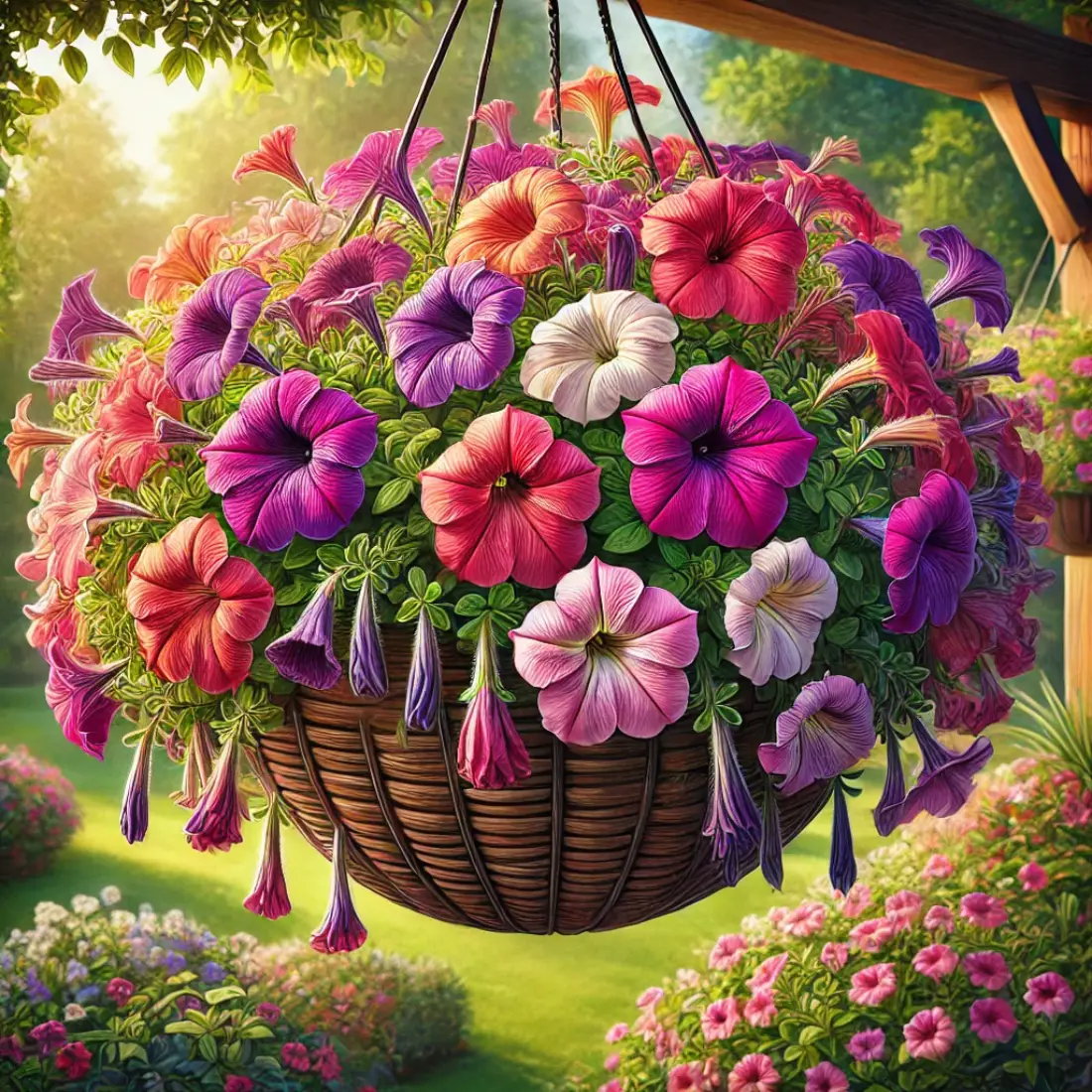
Description: Known for their vibrant colors and continuous blooms, petunias are a favorite for hanging baskets. They thrive in full sun and come in a variety of colors. Care Tips: Water regularly and deadhead spent flowers to encourage new blooms.
Begonias
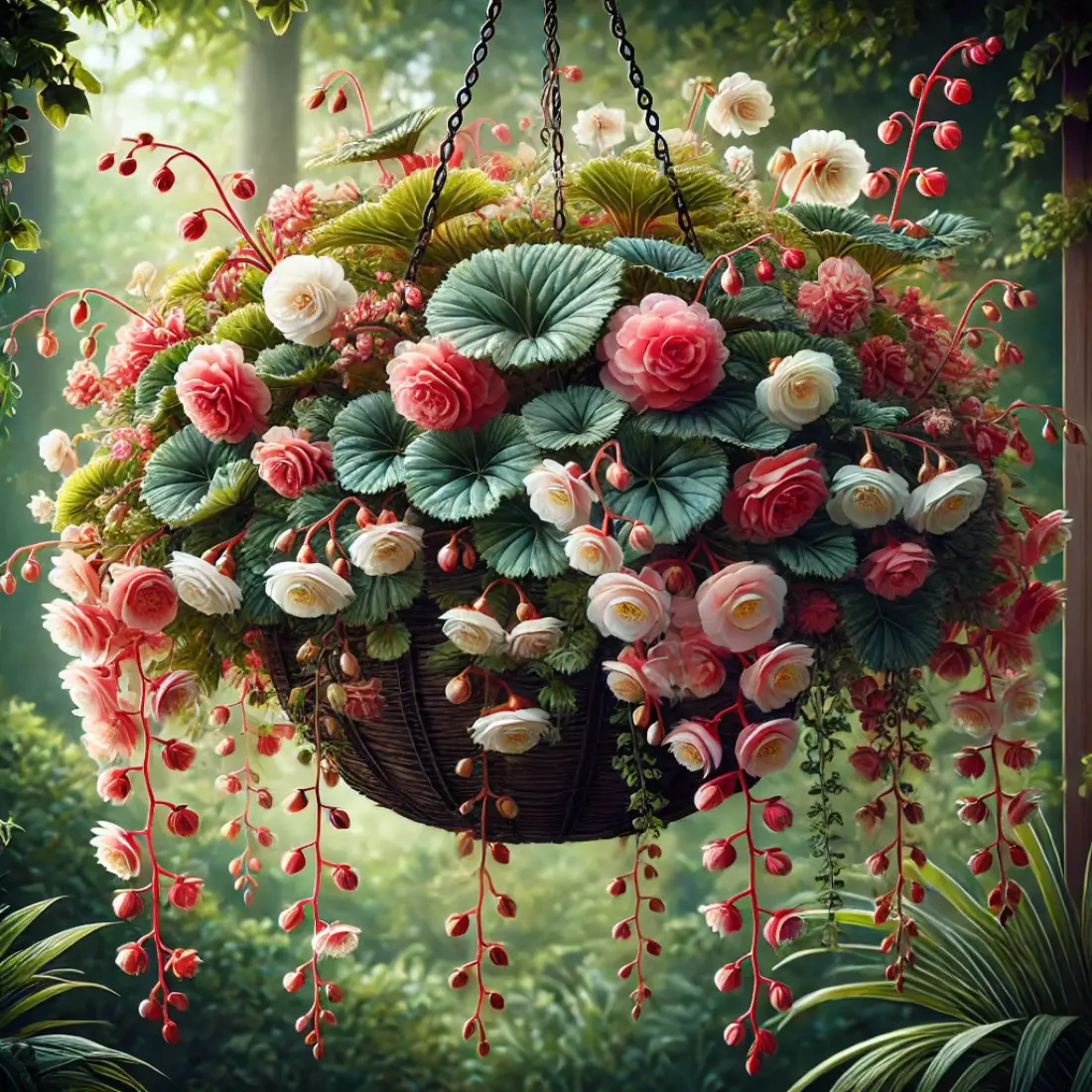
Description: Begonias are ideal for shady areas, producing beautiful flowers and attractive foliage. They are available in multiple varieties, including trailing and bush types. Care Tips: Keep the soil moist but not waterlogged, and provide indirect light.
Fuchsias
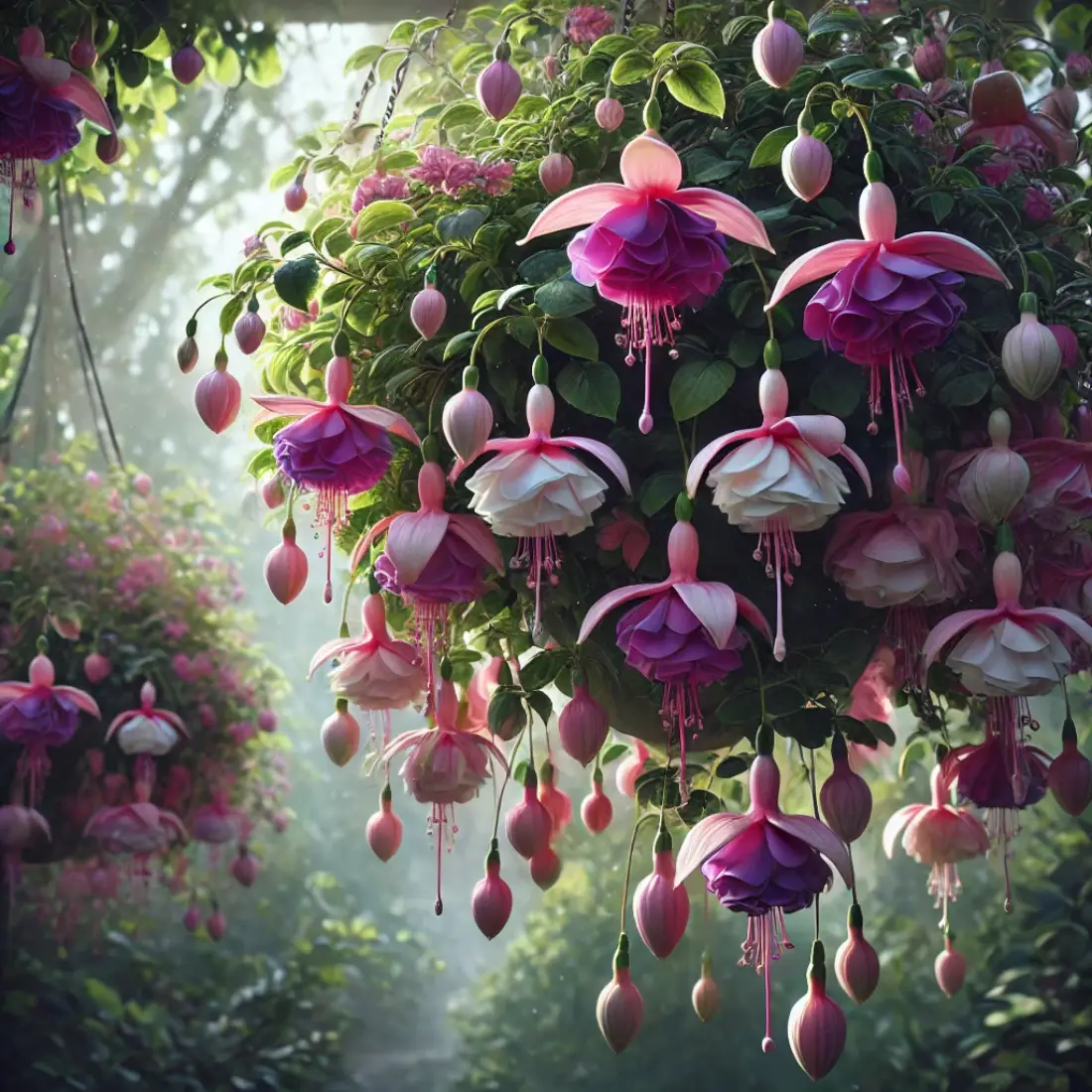
Description: Fuchsias are perfect for adding elegance to your hanging baskets with their pendulous, bell-shaped flowers. They prefer cooler temperatures and partial shade. Care Tips: Water consistently and avoid direct sunlight to prevent wilting.
Lobelia
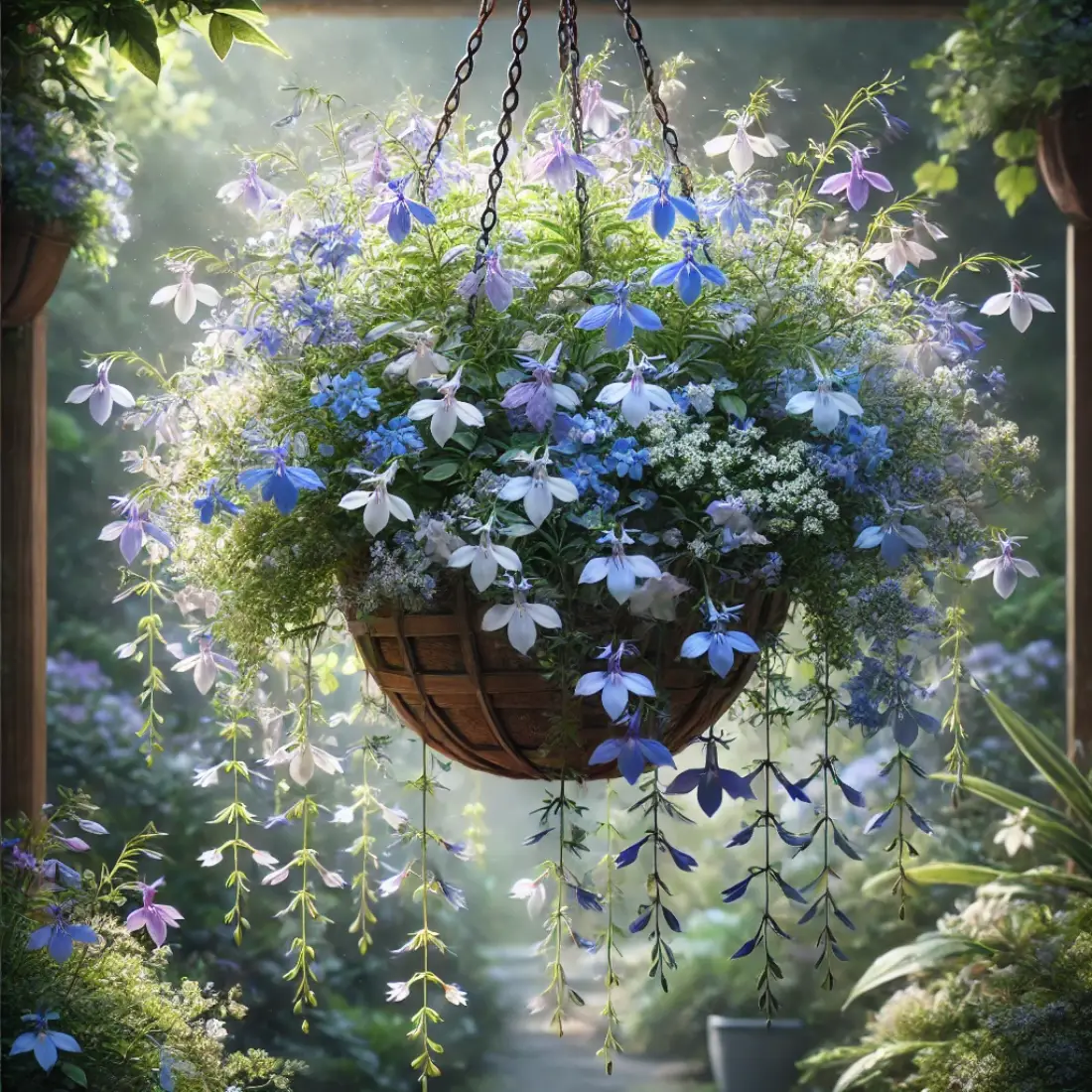
Description: Lobelia offers delicate, cascading flowers in shades of blue, white, and purple. They thrive in cooler climates and add a soft touch to any basket. Care Tips: Plant in partial shade and ensure soil remains consistently moist.
Ivy Geraniums
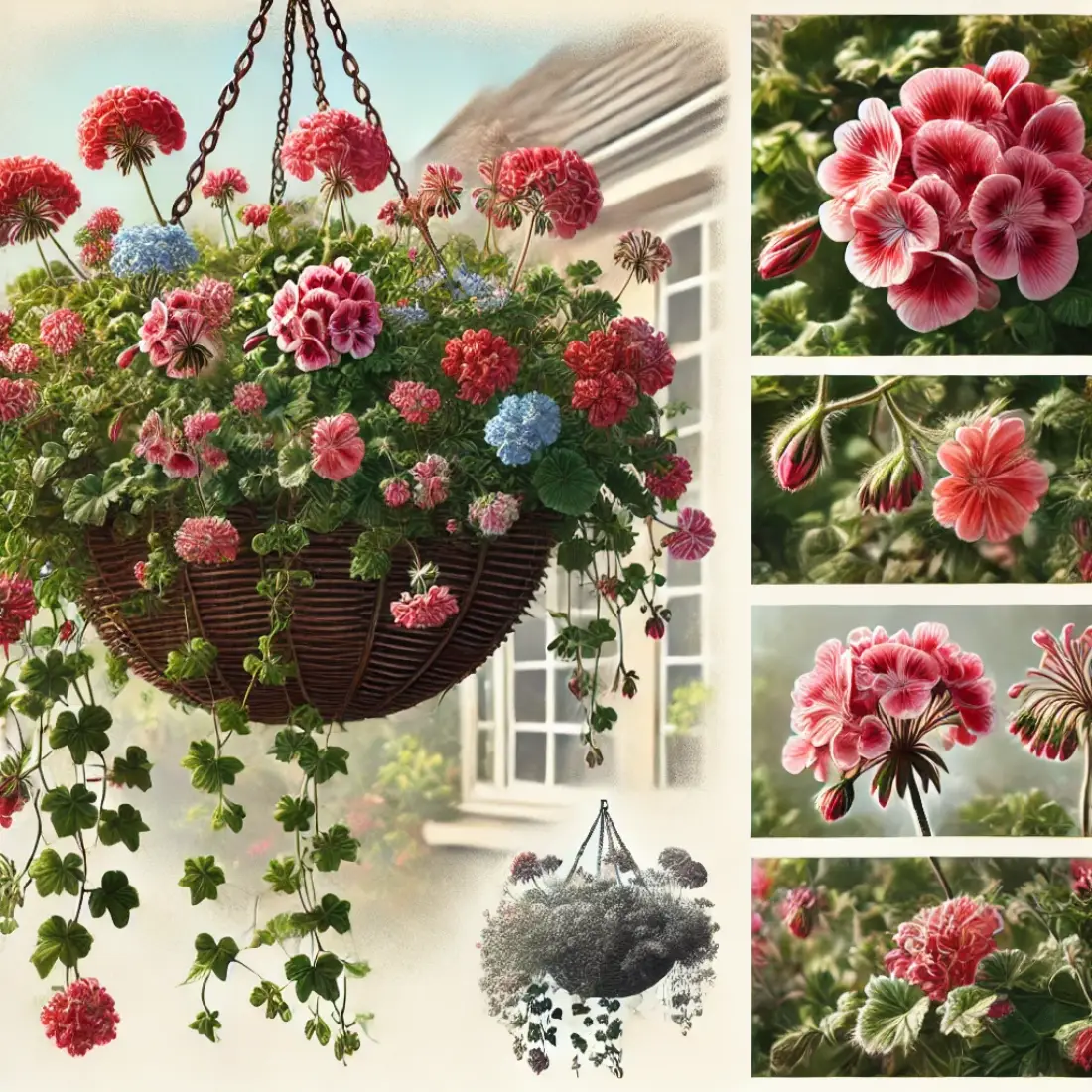
Description: These hardy plants are drought-tolerant and produce clusters of vibrant flowers. They are excellent for sunny locations and add a touch of classic charm. Care Tips: Water sparingly and provide full sun for best results.
Sweet Alyssum
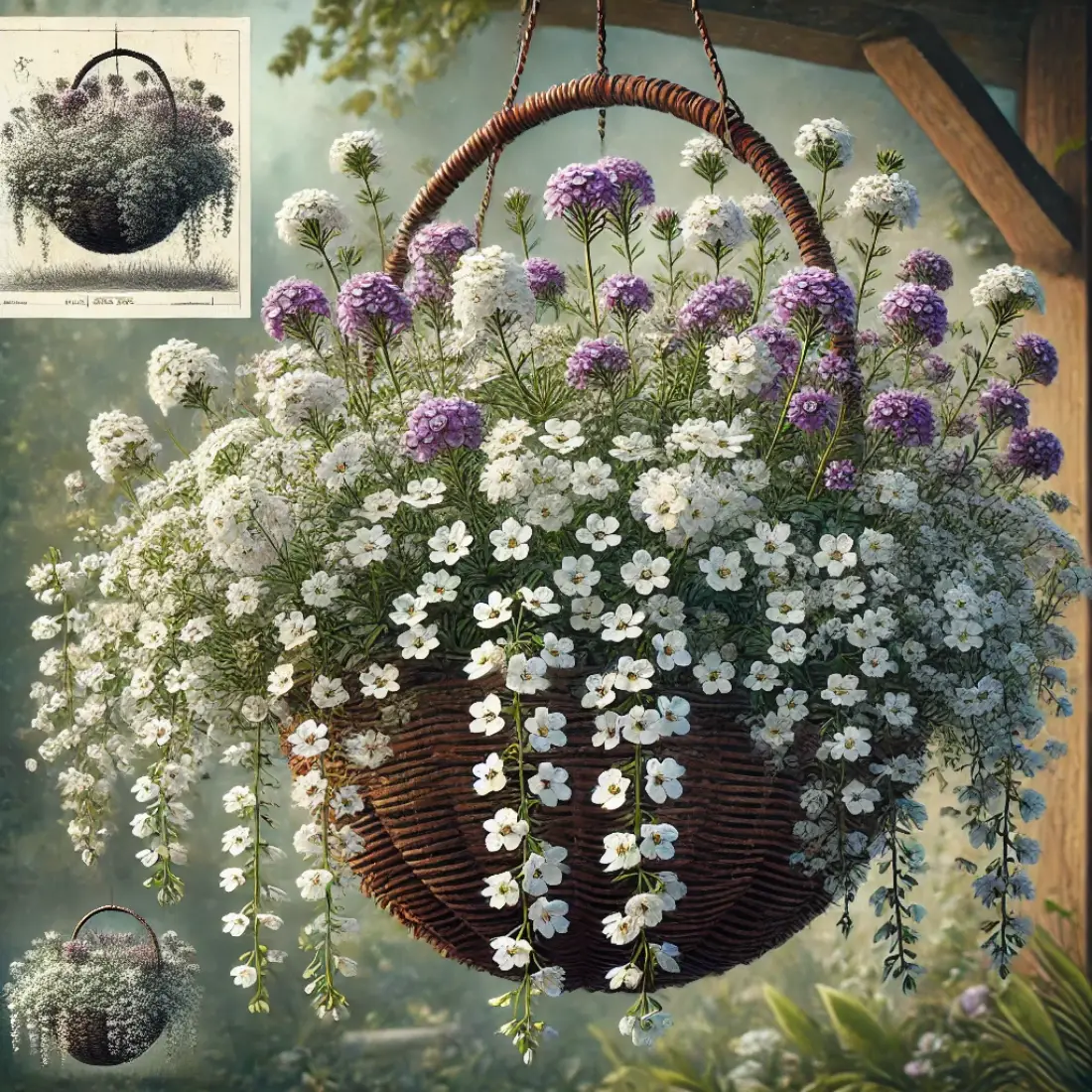
Description: Known for its sweet fragrance, Sweet Alyssum attracts pollinators and creates a beautiful cascading effect with tiny white or purple flowers. Care Tips: Plant in full sun to partial shade and water moderately.
Spider Plants
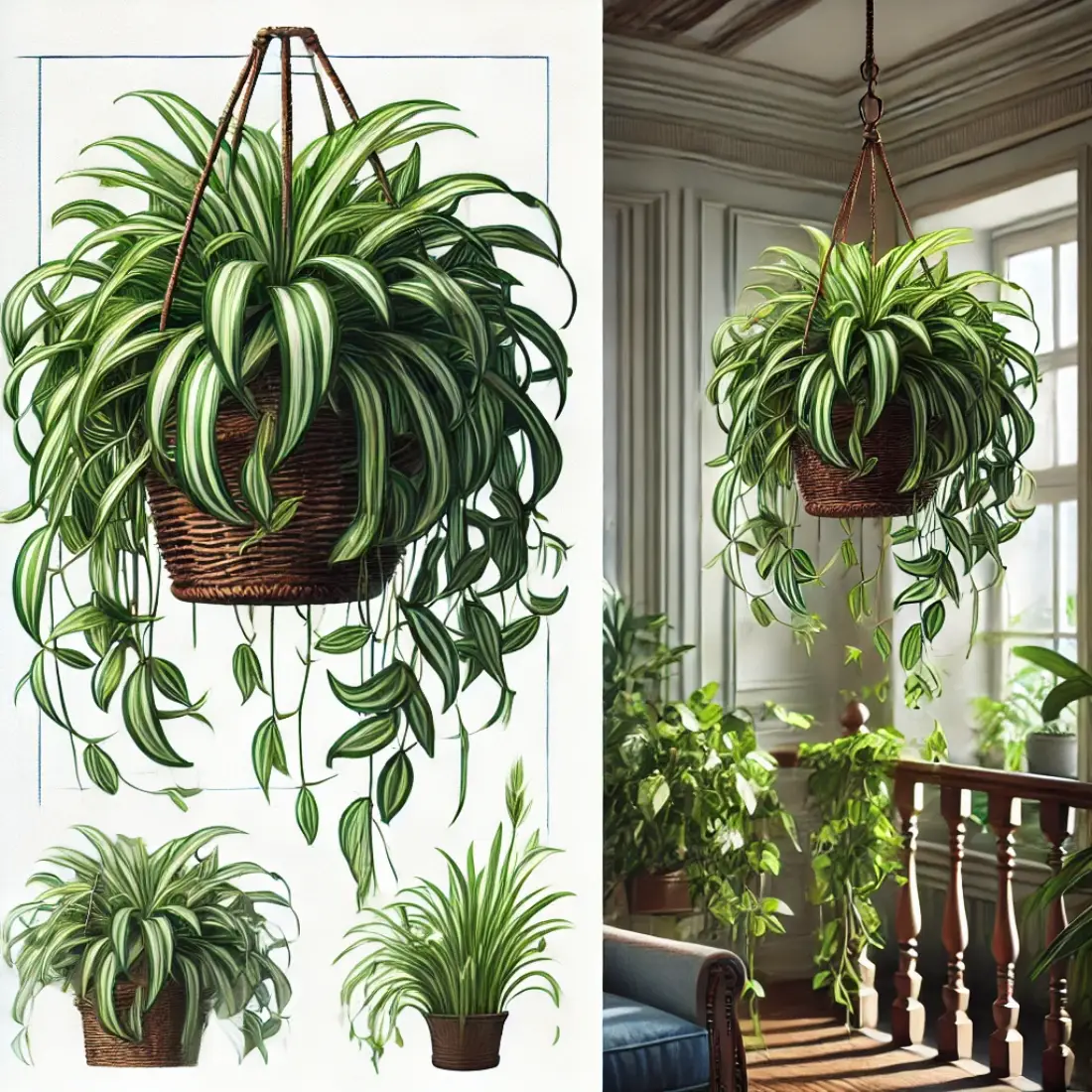
Description: Spider plants are low-maintenance and known for their air-purifying qualities. Their arching green and white-striped leaves create a lush, cascading look. Care Tips: Water occasionally and place in indirect sunlight.
Verbena
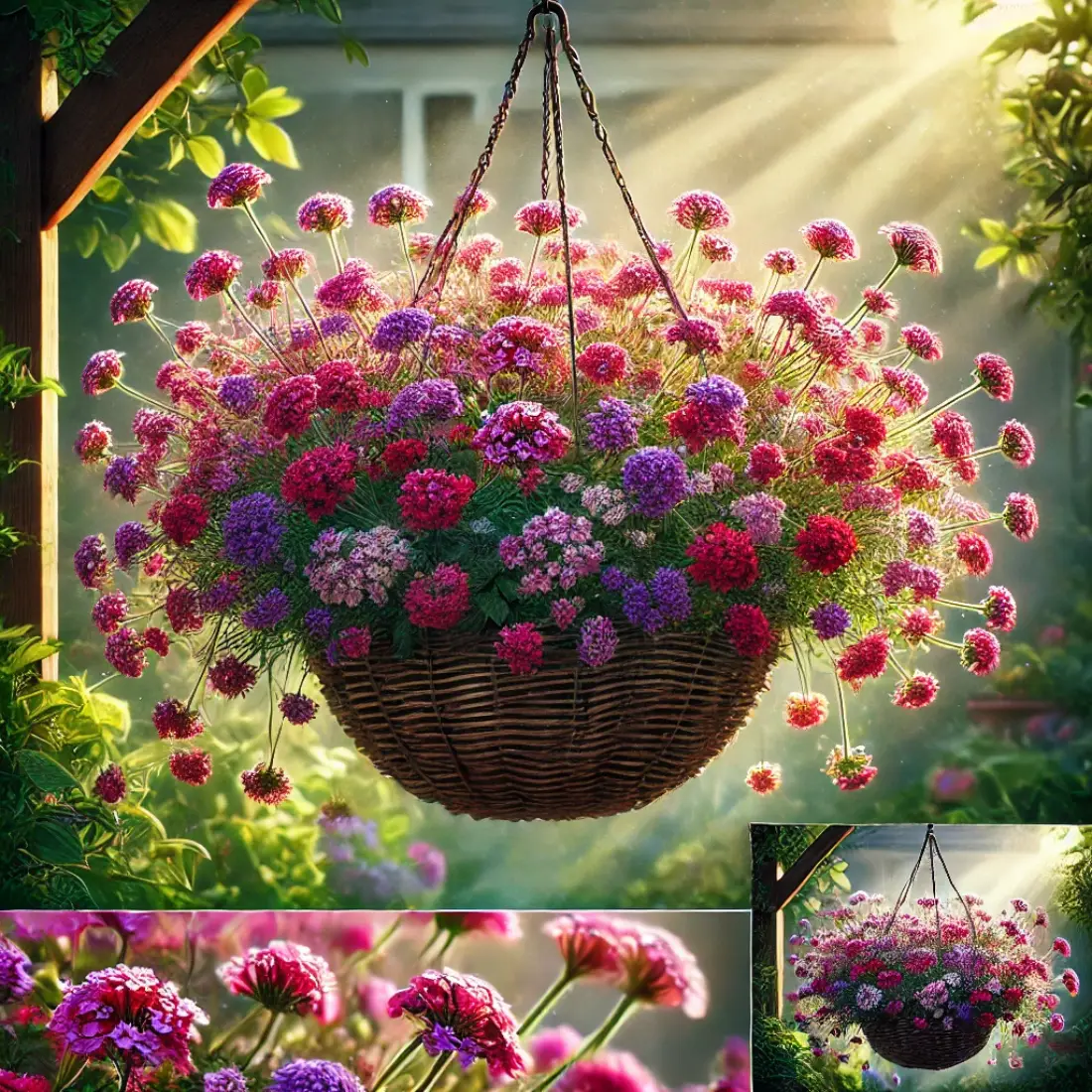
Description: Verbena produces clusters of small, vibrant flowers that bloom throughout the summer. They are sun-loving and drought-tolerant, making them ideal for hanging baskets. Care Tips: Ensure full sunlight and water when the soil is dry.
Trailing Verbena
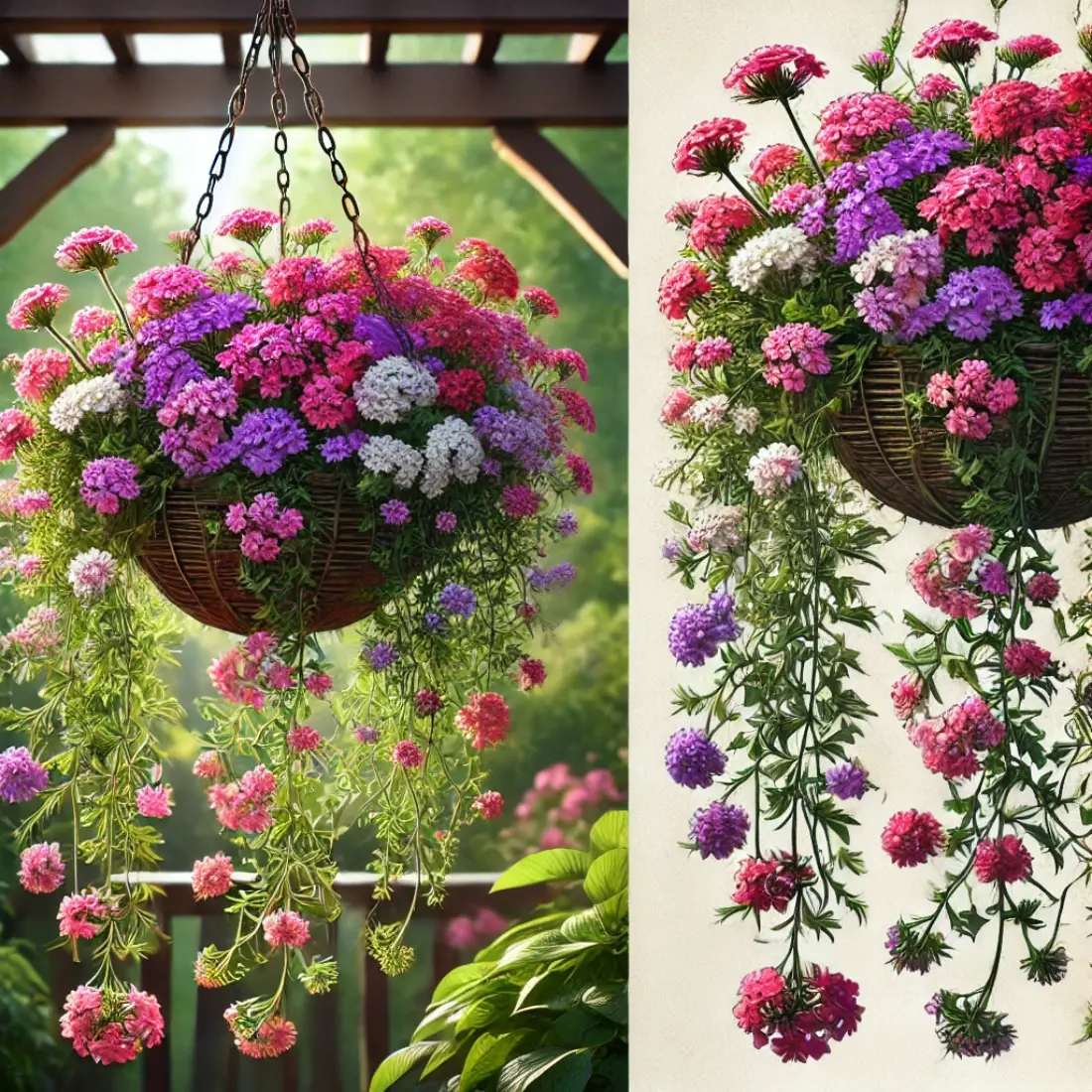
Description: This variety of verbena has a sprawling habit and vibrant colors, making it perfect for creating a full, cascading look in hanging baskets. Care Tips: Plant in full sun and water regularly during dry periods.
Impatiens
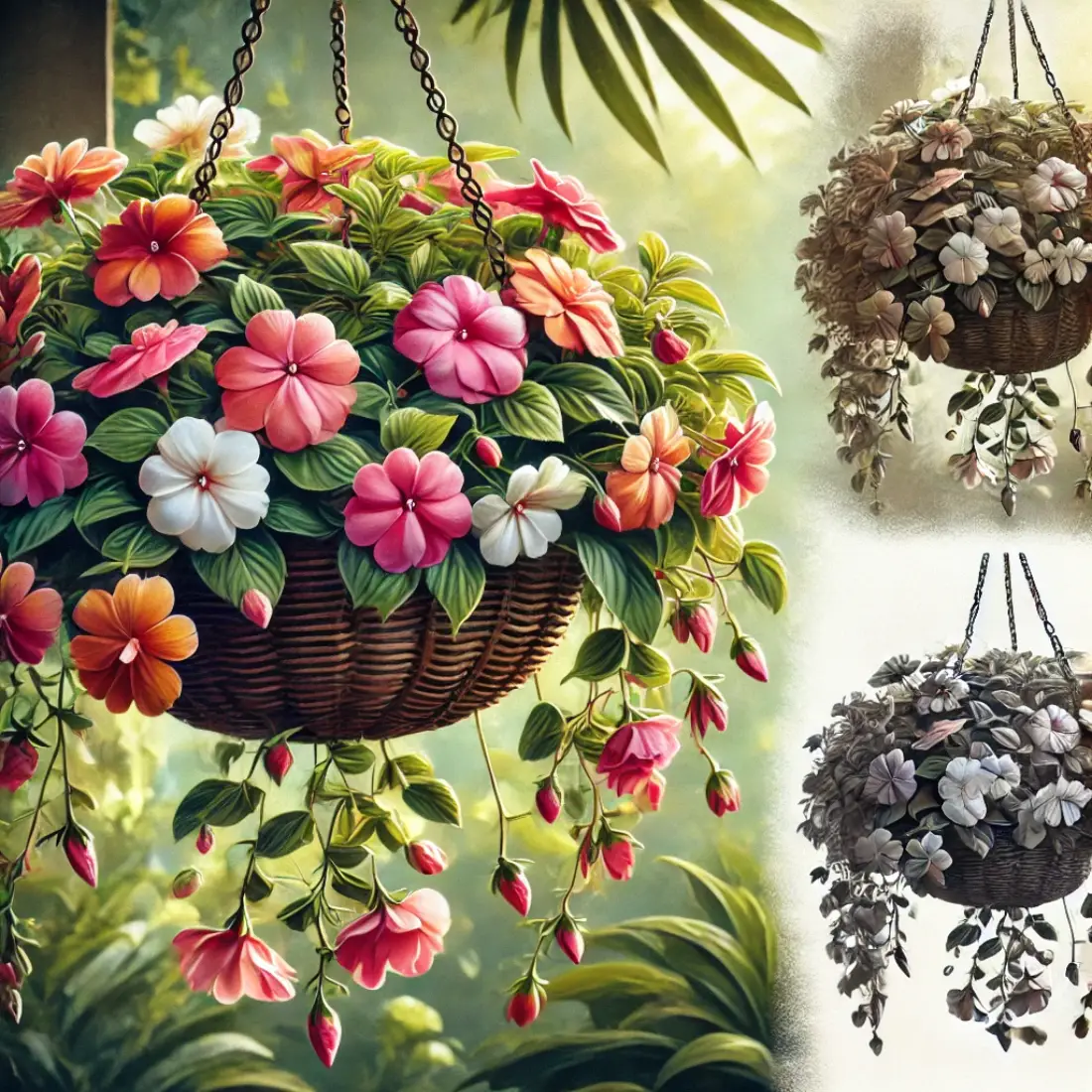
Description: Ideal for shady areas, impatiens offer a burst of color with their vibrant flowers. They are easy to grow and maintain. Care Tips: Keep the soil moist and place it in partial to full shade.
Seasonal Considerations for Hanging Basket Plants
Choosing the best plants for hanging baskets involves understanding the seasonal needs of different plants. This ensures that your baskets remain vibrant and healthy throughout the year. Here’s a guide to seasonal plant selections:
Spring:
- Plants: Pansies, Lobelia, and Primroses
- Care Tips: Spring plants thrive in cooler temperatures and can handle the fluctuating weather. Ensure they receive plenty of sunlight and regular watering to kickstart their growth.
Summer:
- Plants: Petunias, Geraniums, and Verbena
- Care Tips: Summer plants love full sun and warm temperatures. Water them frequently, as hanging baskets dry out faster, and deadhead spent blooms to promote continuous flowering.
Autumn:
- Plants: Mums (Chrysanthemums), Heuchera, and Ivy
- Care Tips: Autumn plants prefer cooler weather and can tolerate light frost. Reduce watering frequency but ensure the soil stays moist. Consider bringing them indoors during heavy frost.
Winter:
- Plants: Pansies, Cyclamen, and Wintergreen
- Care Tips: Winter plants are hardy and can withstand cold temperatures. Water sparingly and ensure they have good drainage to prevent root rot. Provide protection from harsh winds and extreme cold.
Transitioning Plants Between Seasons:
- Care Tips: Gradually acclimate plants to new temperature conditions by placing them in sheltered spots before moving them fully outdoors or indoors. Use mulch to protect roots from temperature fluctuations.
DIY Hanging Basket Ideas
Creating your own hanging baskets is a rewarding and cost-effective way to personalize your garden space. Here are some creative and practical DIY hanging basket ideas:
Materials Needed:
- Hanging basket (wire, plastic, or wicker)
- Potting soil
- Plants (trailing, filler, and focal plants)
- Watering can or hose
Instructions:
- Choose Your Basket: Select a basket that suits your style and space. Ensure it has good drainage holes.
- Prepare the Soil: Fill the basket with high-quality potting soil, leaving some space at the top.
- Select Plants: Choose a mix of trailing plants, fillers, and focal plants. Arrange them in your basket starting with the focal plant in the center.
- Planting: Place the plants in the soil, firming them gently. Add more soil to cover the roots.
- Watering: Water thoroughly after planting to settle the soil and eliminate air pockets.
- Placement: Hang your basket in a suitable location considering light and temperature requirements.
Tips for Using Recycled Materials
Ideas: Repurpose old colanders, tin cans, or even plastic bottles as unique hanging baskets.
- Drill Drainage Holes: Ensure any recycled container has proper drainage to prevent waterlogging.
- Decorate: Paint or decorate the containers to match your garden’s aesthetic.
- Hanging Mechanism: Use sturdy rope or chains to securely hang your DIY baskets.
FAQs about the Best Plants for Hanging Baskets
What are the easiest plants to grow in hanging baskets?
The easiest plants to grow in hanging baskets are petunias, fuchsias, and ivy geraniums. These plants are hardy, require minimal maintenance, and thrive in a variety of conditions. Petunias and ivy geraniums are excellent for sunny spots, while fuchsias do well in partial shade.
How often should I water my hanging basket plants?
Watering frequency depends on the plant type, basket size, and weather conditions. Generally, hanging baskets need watering once a day in hot weather. Ensure the soil is moist but not waterlogged. Water more sparingly in cooler temperatures to avoid root rot.
Can I use herbs in hanging baskets?
Yes, herbs are great for hanging baskets. Herbs like thyme, oregano, basil, and mint grow well in hanging baskets and provide fresh, easily accessible ingredients for cooking. Ensure they receive adequate sunlight and regular watering.
What are the best hanging basket plants for full sun?
The best plants for full sun include petunias, verbena, million bells (calibrachoa), and lantana. These plants thrive in bright sunlight and produce vibrant blooms throughout the growing season. Regular watering and occasional fertilizing will keep them healthy.
How do I prevent my hanging baskets from drying out?
To prevent hanging baskets from drying out, use water-retentive soil or add water-absorbing crystals to the mix. Mulch the soil surface to retain moisture, and water thoroughly until water runs out of the drainage holes. Consider using self-watering baskets for better moisture control.
What are the best trailing plants for hanging baskets?
The best trailing plants include ivy, sweet potato vine, trailing verbena, and bacopa. These plants create a lush, cascading effect, adding visual interest and fullness to your hanging baskets. They thrive in various light conditions and are relatively low maintenance.
Can I grow vegetables in hanging baskets?
Yes, many vegetables can be grown in hanging baskets. Cherry tomatoes, lettuce, spinach, and herbs are ideal for hanging baskets. Ensure they receive sufficient sunlight and regular watering. Use a high-quality potting mix and consider companion planting to maximize space.
How do I protect my hanging baskets from wind damage?
To protect hanging baskets from wind damage, place them in sheltered locations or use heavy-duty hooks and brackets to secure them. Choose sturdy baskets, and avoid hanging them too high. Regularly check the baskets and adjust their placement as needed.
What should I do with my hanging baskets in winter?
In winter, bring indoor or frost-sensitive plants inside or to a sheltered area. For hardy plants, reduce watering and prune dead or damaged foliage. Add a layer of mulch to insulate the roots. Consider using winter-specific plants like pansies and cyclamen for outdoor baskets.
How do I fertilize my hanging basket plants?
Fertilize hanging basket plants with a balanced, organic fertilizer every two weeks during the growing season.

